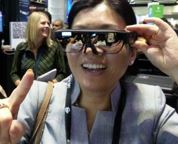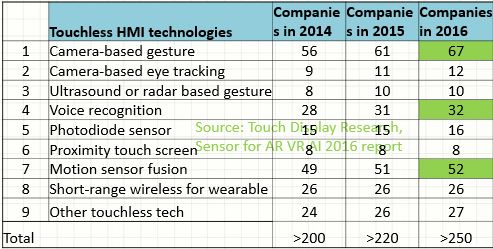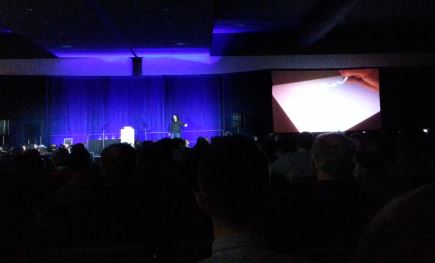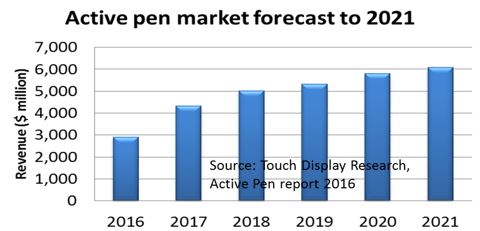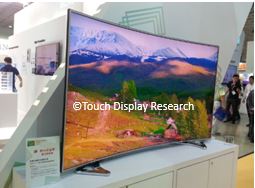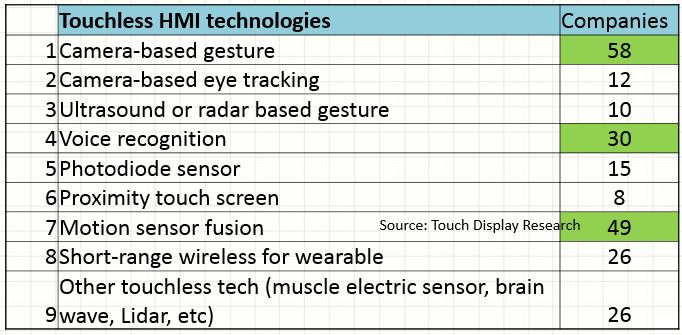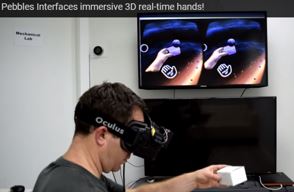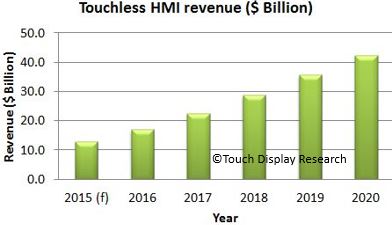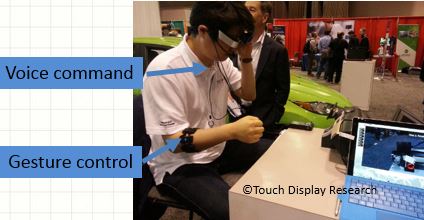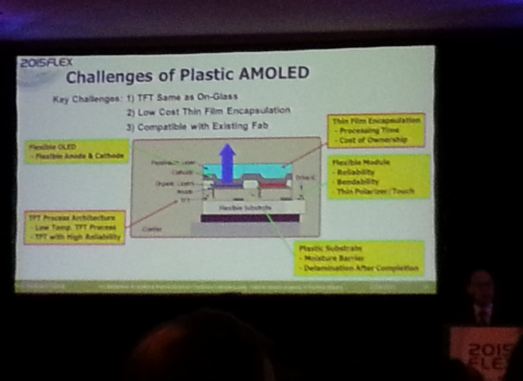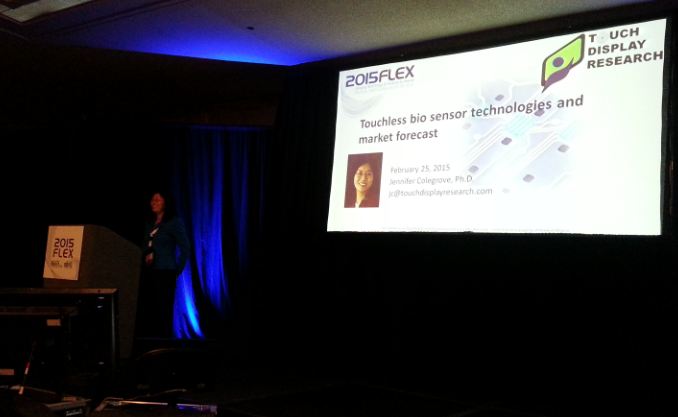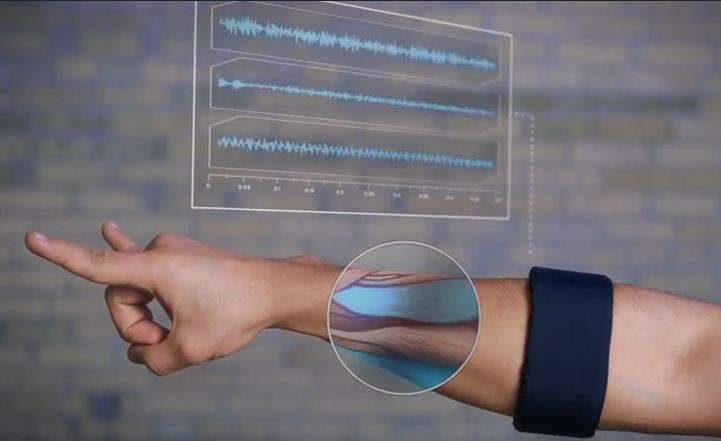June 2, 2016
I just returned from AWE (Augmented World Expo) 2016 conference. AWE is the largest event dedicated to AR, VR and wearable technology.
At AWE 2016, ODG (Osterhout Design Group) showcased its smart glasses with gesture control. Touch Display Research had a chance to try on the R-7 smart glasses and test the gesture control.
Figure: Dr. Colegrove tried on the ODG smart glasses at AWE 2016.
Photo credit: ODG
In the recently published “Sensor for Augmented Reality, Virtual Reality and Artificial Intelligence 2016 report”, Touch Display Research profiled 67 companies working on camera-based gesture-control. This number has increased from 56 companies just two years ago.
Figure 2. Companies working on gesture control, voice recognition and other touchless HMI sensors.
Source: Touch Display Research, Sensors for AR VR and AI 2016 report
More analysis and review can be found in the “Touch and Emerging Display report” June 2016 issue.
Thanks for reading,
Dr. Jennifer Colegrove and team

